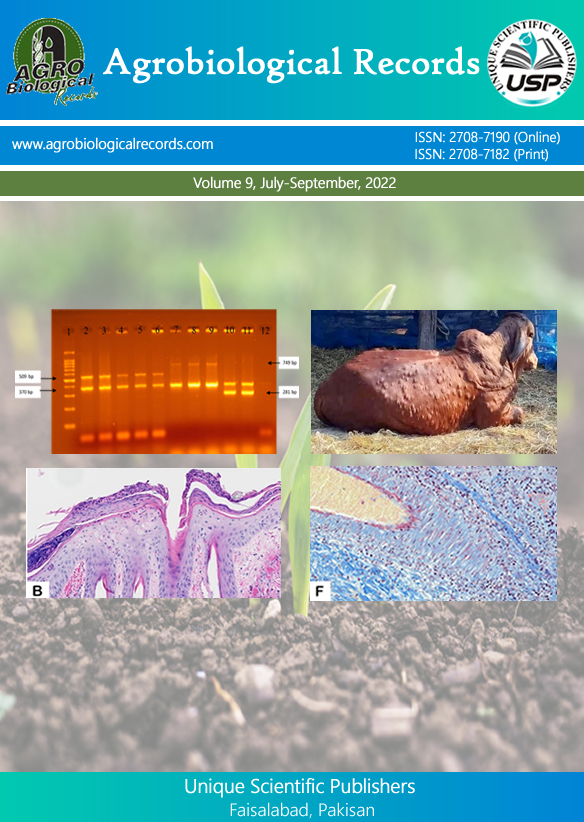
Rukhsana Nazir*1, Saad Aziz Ajmal2, Syeda Sana Fatima1, Muhammad Bilawal Junaid3, Muhammad Wahab1 and Aqsa Arif1
1Department of Plant Pathology, University of Agriculture, Faisalabad, Pakistan 2Crop sciences Institute, National Agriculture Research Center, Ministry of National food security and Research, Islamabad, Pakistan 3Department of Plant Production, College of Food and Agriculture Sciences, King Saud University, Riyadh 11451, Saudi Arabia
*Corresponding author: rukhsananazir99@gmail.com
Tomato wilt is a significant yield-reducing disease in tomato crops, caused primarily by Fusarium species, including Fusarium verticillioides, Fusarium oxysporum, and Fusarium equiseti. These wilt-causing fungal pathogens can persist in soil for up to 10 years, severely impacting crop health and yield, resulting in substantial economic losses for farmers. The objective of this study is to develop eco-friendly control methods for managing tomato wilt disease. In this study, fungal pathogens associated with tomato wilt were isolated from different parts of infected plants and identified based on their morphological and microscopic characteristics. Management strategies were evaluated using various treatments, including acidic soil, alkaline soil, neutral soil, chemical control, biocontrol and vermicompost, both individually and in combination. Soil acidity was adjusted using humic acid, alkalinity with poultry manure, and neutrality was maintained with water. For chemical control, Carbendazim was employed, and Trichoderma harzianum was utilized for biocontrol. The experiment comprised 21 treatments, each with three replications, including a control group with three replications. The study was conducted in pots using a Completely Randomized Design (CRD). Seven parameters were noted; number of flowers, number of fruits, plant shoot length (cm), total number of branches, total number of leaves, yellowing and drying of leaves, and wilting %. Recorded data were statistically analyzed. The treatments T17 (Carbendazim + Vermicompost), T7, T13, T4, T8, T9, T19, T21, T20, T18, T15, T10, T12, T14, T16, T11, T5, T6, T2, T1, and T3 reduced wilting by 84, 82, 81, 80, 80, 79, 79, 78, 78, 74, 74, 74, 73, 73, 72, 71, 70, 69, 64, 60, and 51%, respectively. All treatments promoted plant growth. The reduction in wilting observed in T17-treated plants and all other treatments was significantly greater than that in the control and T3 (Water) treated plants.